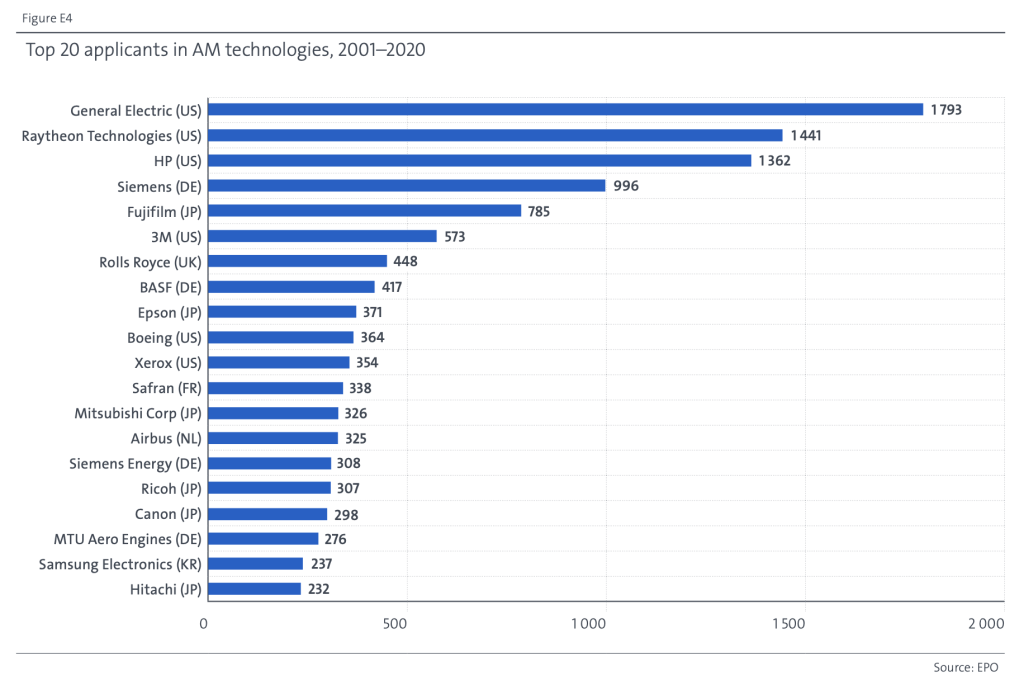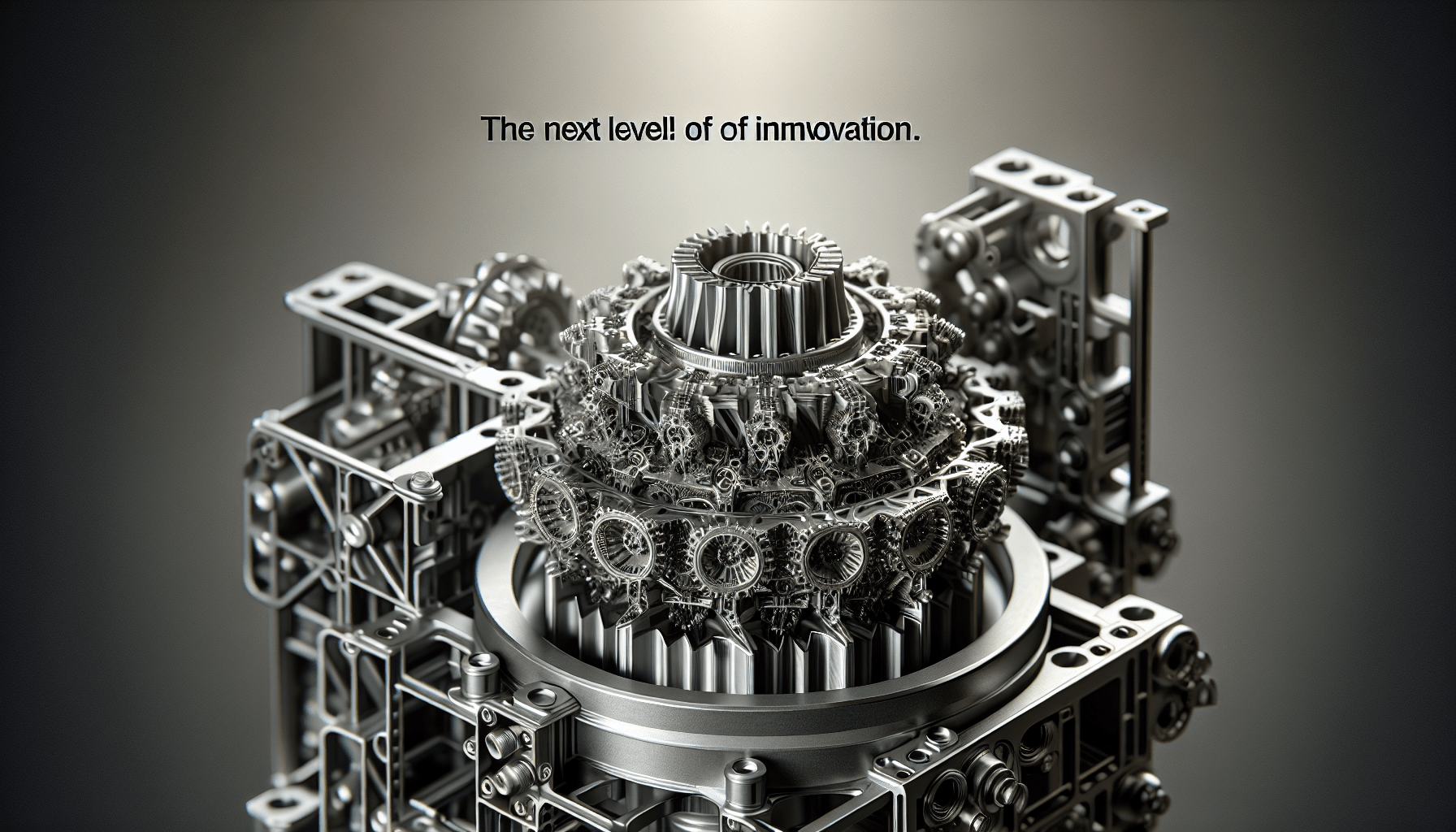In the dynamic realm of technology, where innovation reigns supreme, one particular field has been soaring to new heights at an unprecedented rate. Over the span of seven years, from 2013 to 2020, the number of patent applications for additive manufacturing technologies experienced a growth that surpassed all other technology sectors by eightfold. With Raytheon Technologies and General Electric leading the pack, followed closely by HP and its pioneering 3D printers, the applications in the medical and transportation industries have particularly witnessed a surge. However, the impact of these patents on innovation does come with its fair share of challenges, including patent pendency. Nevertheless, it is impossible to ignore the burgeoning interest in additive manufacturing, as demonstrated by the aerospace industry’s significant increase in patent applications and the medical sector’s notable growth in patents related to medical equipment, implants, and prostheses. Pushing the boundaries of what is possible, this remarkable technology has even ventured into the realm of 3D printed organs and artificial human tissue, with Harvard University at the forefront of organ 3D printing. The path to technological advancement is paved with these patents, showcasing the awe-inspiring power of additive manufacturing.
Additive Manufacturing Technologies
Growth in Patent Applications
In recent years, there has been a rapid growth in patent applications for additive manufacturing technologies. In fact, the number of patent applications for additive manufacturing grew eight times faster than all other technology fields between 2013 and 2020. This signifies the significant interest and investment in this emerging technology. Additive manufacturing, also known as 3D printing, has revolutionized various industries, and this growth in patent applications is a testament to its potential.
Comparison with Other Technology Fields
When comparing the growth of patent applications in additive manufacturing with other technology fields, it is clear that additive manufacturing is leading the pack. While other fields have also witnessed growth in patent applications, none have come close to the exponential growth of additive manufacturing. This highlights the prominence and importance of this technology in the global market.

Top Applicants
Two major players in the additive manufacturing sector, Raytheon Technologies and General Electric, have emerged as the top applicants for additive manufacturing patents. These companies have recognized the potential of additive manufacturing and have been actively filing patent applications to protect their innovations. Their commitment to research and development in this field is evident from their extensive patent portfolios.
Additionally, HP, a renowned technology company, has also established itself as a leading applicant in the additive manufacturing space. HP’s focus on 3D printers has allowed them to explore the potential of additive manufacturing in various industries and applications.
Raytheon Technologies and General Electric
Both Raytheon Technologies and General Electric have been at the forefront of additive manufacturing research and development. Their commitment to innovation in this field is evident from the numerous patent applications they have filed. These companies have recognized the potential of additive manufacturing in aerospace, defense, and other industries, and they have been actively seeking to protect their intellectual property.
By securing patents, Raytheon Technologies and General Electric are not only protecting their innovations but also positioning themselves as leaders in the additive manufacturing space. Their extensive patent portfolios give them a competitive advantage and solidify their positions as pioneers in this rapidly evolving field.

HP and Its 3D Printers
HP, a company known for its printers and technology solutions, has also made significant strides in additive manufacturing. With a focus on 3D printers, HP has been able to explore the potential of this technology across various industries. The company’s dedication to additive manufacturing is evident from its patent applications, which cover a wide range of applications and technologies.
HP’s 3D printers have been acclaimed for their precision, speed, and reliability. The company’s advancements in additive manufacturing have not only led to technological breakthroughs but have also opened doors for innovation in industries such as healthcare, automotive, and more. HP’s commitment to additive manufacturing is shaping the future of this industry and paving the way for new possibilities.
Impact of Patents
Innovation and Patents
Patents play a crucial role in fostering innovation in the field of additive manufacturing. By granting exclusive rights to inventors, patents incentivize research and development in this emerging field. Inventors and companies are driven to invest in additive manufacturing technologies when they know that their innovations are protected and cannot be easily replicated by competitors. This protection encourages further exploration, experimentation, and refinement of additive manufacturing technologies, leading to continuous innovation.
Patents also promote collaboration and knowledge sharing within the additive manufacturing community. Through patent applications, inventors and companies disclose their techniques, processes, and inventions to the public. This allows other researchers and innovators to build upon existing knowledge, driving the overall growth and advancement of additive manufacturing technologies.

Patent Pendency Challenges
Although patents are essential for promoting innovation, the process of obtaining a patent can be challenging and time-consuming. Patent pendency, the time it takes for a patent application to be examined and granted, poses significant challenges in the additive manufacturing field.
Given the rapid pace of technological advancements in additive manufacturing, patent pendency can hinder the ability of inventors and companies to protect their innovations effectively. Delays in the patent examination process can result in competitors capitalizing on similar ideas or technologies, compromising the competitive advantage of early innovators. Additionally, a lengthy patent pendency period can stifle investment and discourage innovation, as companies may be hesitant to invest in technologies that may not be adequately protected in a timely manner.
Efforts to streamline and expedite the patent examination process in the additive manufacturing field are crucial to ensure that inventors and companies can secure their inventions and innovations promptly. By addressing patent pendency challenges, the industry can foster a more conducive environment for innovation and encourage further advancements in additive manufacturing technologies.
Patent Applications in Industries
The Medical Sector
The medical sector has emerged as a significant player in the field of additive manufacturing, with numerous patent applications being filed in recent years. This trend is driven by the potential of 3D printing to revolutionize healthcare by enabling personalized and customized treatments and solutions.

The Transportation Sector
The transportation sector has also witnessed a surge in patent applications for additive manufacturing technologies. With the ability to rapidly produce complex parts and components, 3D printing is revolutionizing the production processes in automotive, aviation, and maritime industries. These advancements are contributing to greater efficiency, cost savings, and enhanced performance in the transportation sector.
The Aerospace Industry
The aerospace industry is one of the industries at the forefront of additive manufacturing adoption. The ability to produce lightweight yet robust components has revolutionized aircraft design and manufacturing processes. As a result, the aerospace industry has seen a significant increase in additive manufacturing patent applications.
The application of additive manufacturing in aerospace has led to advancements in fuel efficiency, reduced weight, and improved performance in aircraft and spacecraft. This technology has opened up new possibilities for design and manufacturing, enabling the production of complex geometries that were previously unattainable or cost-prohibitive. The aerospace industry’s embrace of additive manufacturing is a testament to its potential to transform traditional manufacturing processes.
Patent Applications in the Medical Sector

Growth in 3D Printing Patents
The medical sector has experienced remarkable growth in patent applications related to 3D printing. This surge is driven by the potential of additive manufacturing to revolutionize healthcare by offering personalized treatments, customized medical devices, and efficient production of complex anatomical structures.
Focused Areas of Application
Within the medical sector, patent applications for 3D printing technologies have been focused on various areas of application. These include medical equipment, implants, prostheses, organ 3D printing, and artificial human tissue.
Medical Equipment
The production of medical equipment using additive manufacturing has gained significant attention in recent years. With 3D printing, it is possible to manufacture intricate medical instruments and devices with high precision and accuracy. This has the potential to improve patient care, enhance diagnostics, and streamline medical procedures.
Implants and Prostheses
Additive manufacturing has revolutionized the production of implants and prostheses. By leveraging 3D printing technologies, customized implants and prostheses can be created to match the specific anatomical needs of patients. This personalized approach leads to better patient outcomes, improved functionality, and enhanced quality of life for individuals in need of implants or prosthetic devices.
Organ 3D Printing
One of the most groundbreaking applications of additive manufacturing in the medical sector is the development of 3D printed organs. The potential to create functional organs using a patient’s own cells brings hope to individuals waiting for organ transplants. Although still in its early stages, organ 3D printing has garnered significant attention from researchers, medical professionals, and the public.
Artificial Human Tissue
Another area of application within the medical sector is the production of artificial human tissue using additive manufacturing. By layering biocompatible materials, it is possible to create tissue constructs that closely resemble natural human tissue. This opens up possibilities for drug testing, tissue engineering, and regenerative medicine.
Leading Applicant in Organ 3D Printing
Harvard University
Harvard University has emerged as a leading applicant in the field of organ 3D printing. Their research and development efforts in this area have resulted in numerous patent applications. Harvard’s innovation in organ 3D printing has the potential to revolutionize the field of transplantation and address the critical shortage of donor organs.
Through their pioneering work, Harvard University is pushing the boundaries of additive manufacturing to create functional organs. Their research and inventions in organ 3D printing have the potential to save countless lives and transform the healthcare landscape. As a leading applicant in this field, Harvard is driving innovation and paving the way for the future of organ transplantation.











